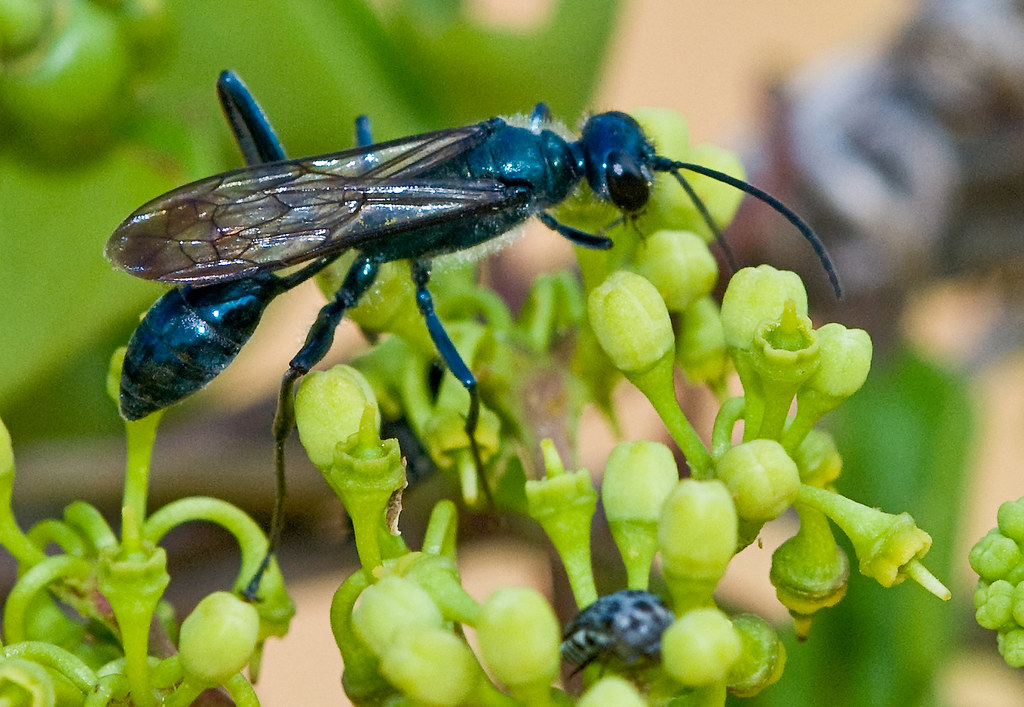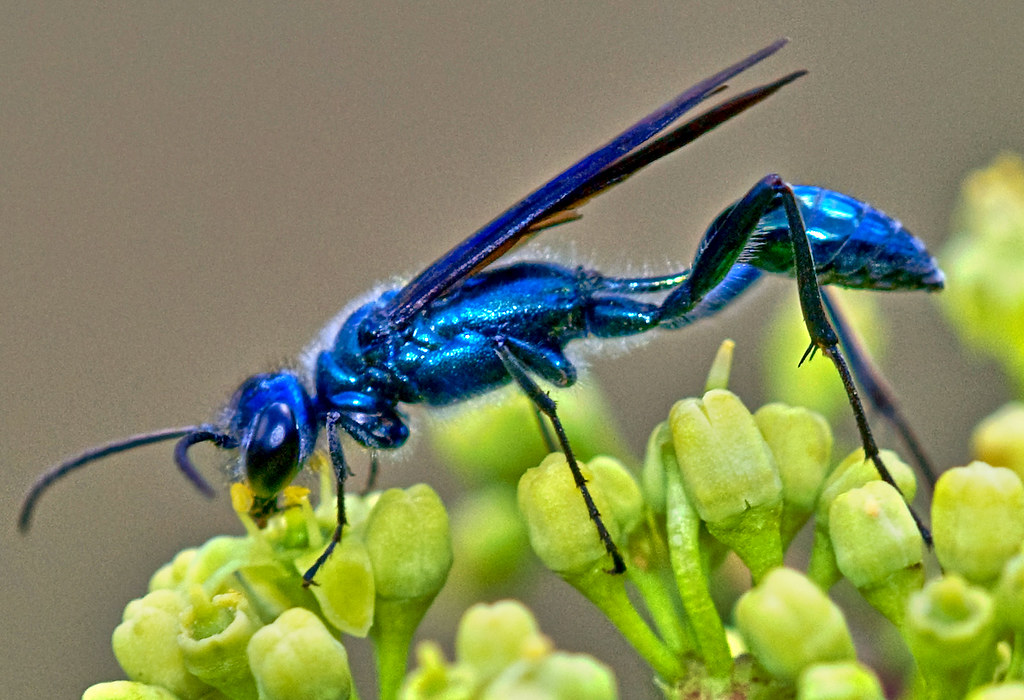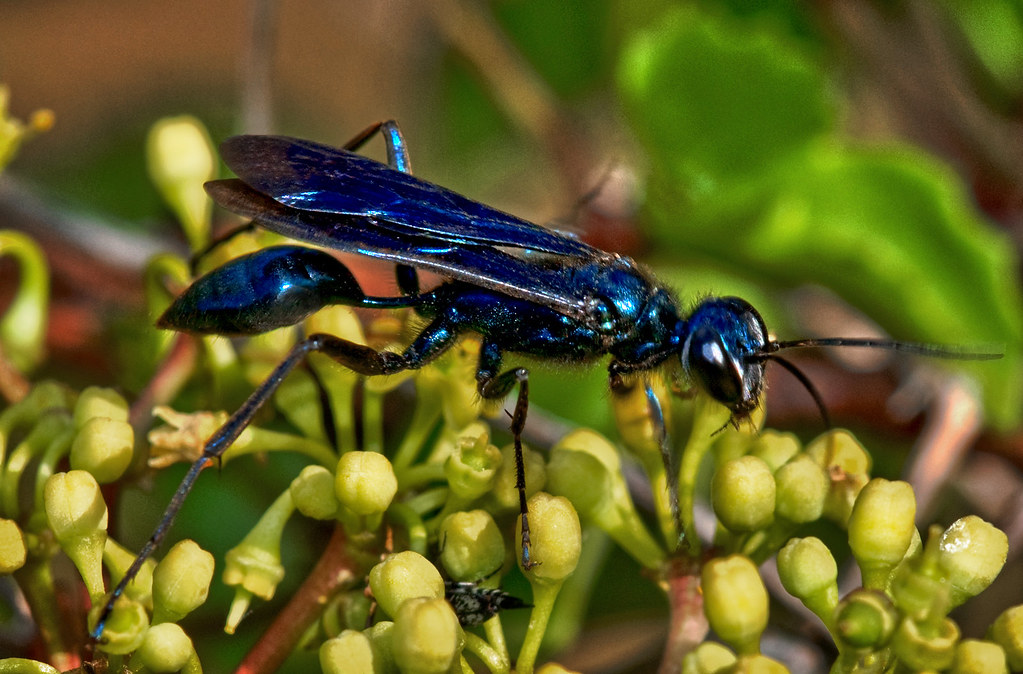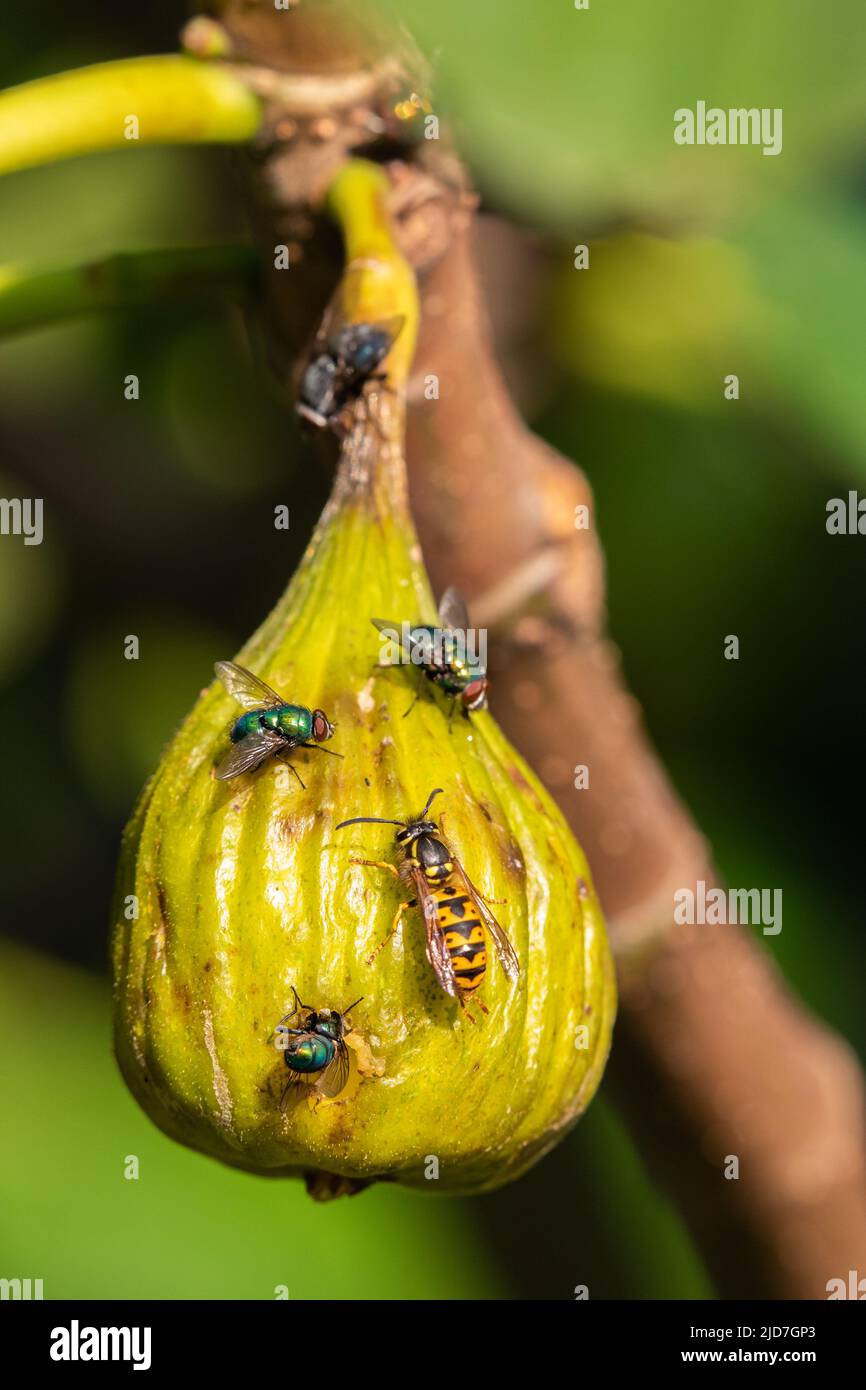
Another metallic blue wasp This is a Sphecid wasp, most li… Flickr
The blue ant ( Diamma bicolor ), also known as the blue-ant or bluebottle, is a species of flower wasp in the family Thynnidae. [1] It is the sole member of the genus Diamma and of the subfamily Diamminae. Despite its common name and wingless body, it is not an ant but rather a species of large, solitary, parasitic wasp. [2] Distribution

Blue bottle fly [ Calliphora vomitoria green bottle fly[ Lucilia sericata ] and common
The bluebottle ( Physalia utriculus) is also known as a Pacific man o' war — similar to a Portuguese man o' war, which is found in the Atlantic Ocean. The dangerous part of a bluebottle is the.

Metallic blue wasp This is probably Chalybion californicum… Flickr
The Bluebottle is a common species that often gets washed up onto Sydney beaches in the summer time.

Beautiful Bees and Wasps Up Close Arthropods, Insects, Native bees
Sea Lizards feed on the stinging cells of blue bottles to use them for their own defence. 87895263@N06/flickr, CC BY-SA. Avoiding the sting. In the water, a given blue bottle might not be so easy to see at the far end of a metres-long tentacle, but generally they travel in numbers, so earlier arrivals may be observed strewn along the beach.

"blue winged wasp (scolia dubia)" by jude walton Redbubble
The Blue Ant is not an ant but a species of flower wasp from the family Tiphiidae. Identification. The wingless, ground-dwelling female Blue Ants are bright metallic blue or green, and can sometimes be mistaken for a large ant. However they are a solitary wasp species, with fully winged males, and can often be found on flowers. Habitat

Wasp captures and cuts apart A blue bottle fly YouTube
Description: A type of flower wasp, Blue "ants", aka Bluebottles, have a distinctive metallic blue-green body, with red legs. The female ranges up to 25 mm (1 inch) in length, is wingless and ground-dwelling, and exclusively hunts mole crickets, whereas all other species of tiphiids attack beetle larvae. The male is winged and about half her size.

Bluebottle wasp! YouTube
Graphium sarpedon, the common bluebottle or blue triangle in Australia, is a species of swallowtail butterfly, that is found in South and Southeast Asia, as well as eastern Australia. There are approximately sixteen subspecies with differing geographical distributions. Wikipedia. Spotted at Dairy Farm. Singapore Geographic, Singapore Nature. TAGS.

Another metallic blue wasp My query to has go… Flickr
Organisms Blow-flies ( Calliphoridae) of genus Calliphora and similar species from other genera Specifically, the blue bottle fly Calliphora vomitoria The Portuguese man o' war ( Physalia utriculus ), stinging marine siphonophores resembling jellyfish and known as bluebottles in Australia, South Africa and New Zealand

Absurd Creature of the Week If This Wasp Stings You, 'Just Lie Down and Start Screaming' WIRED
A species of North and Central America, Steel-Blue Cricket-Hunter Wasps (Chlorion aerarium) are among the multiple blue wasps of The Americas.. Shiny Blue Bottle Fly. These types of flies (Cynomya cadaverina) are known in North America in the spring months. High activity of Shiny Blue Bottle Flies is also seen in the fall when they seek refuge.

Metallic blue wasp This is a Sphecid wasp, possibly of the… Flickr
The bright yellow color of the wasp is its main identifying feature. The yellow wasps are generally found in Texas, Arizona, and New Mexico. Wasp identification: The yellow wasp is easy to identify due to its yellow color and orange and brown markings. The large yellow wasps grow up to 1.2" (3 cm) long.

Bluebottle approaching wasp on ivy photo WP08486
August 14, 2019 by Irina A blue ant is also known as a blue bottle. Despite the fact that we call it an ant, it is nothing like one. Even if you look at it, it resembles an ant, but still, it is not one, rather it is one kind of a solitary parasite wasp. Also, known as a flower wasp.

Document Moved
Common name: Blue ant, blue bottle Scientific name(s): Diamma bicolor (Family Tiphiidae, subfamily Diamminae). Description: Blue 'ants' are not ants at all but are solitary wasps.The females are wingless, ground dwelling wasps up to 25mm in length. Their head and bod have a distinct metallic blue-green colouration and their legs are bright red.

Blue bottle fly [ Calliphora vomitoria green bottle fly[ Lucilia sericata ] and common
This bi-colored insect is actually a type of parasitic wasp. Many varieties of flower wasps have a wingless gender, and this also holds true for them. Not incidentally, it has only a moderate habitat range, however. Like many other insects, this makes it vulnerable to habitat loss and climate change.

Blue Ant male ( Diamma bicolor) Also known as Blue Bottle, this is a male flower wasp is not
The blue bottle wasp is a large Hymenopteran native to Australia. These guys regularly grow to about 2 centimeters (just under an inch) and can pack a painful punch! This gal stung me multiple.

Blue Bottle Fly Bull Skulls, Blue Bottle, Flora And Fauna, Fish Tank, Dark Aesthetic, Bugs
Blue Flower Wasps are frequent visitors and appear in our cold climate garden from mid summer to early autumn. They are eye-catching, steely-blue wasps, about three centimetres long, who spend their time zooming around, often close to the ground and feeding on flowering native plants. We have observed the wasps feeding on the nectar of Baeckeas.

Know your wasps — Atlas of Life
The male Blue Ant has a darker body with white spots on his abdomen. Males are smaller, only growing to 1.5 cm, have wings and can fly. The male Blue Ant behaves more like a wasp, but the female looks and behaves just like an ant. The females live in burrows in the ground, though they will also dart about the garden in an erratic fashion.